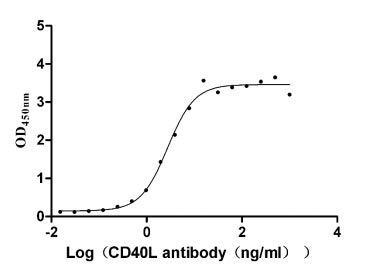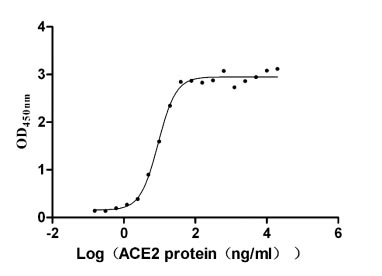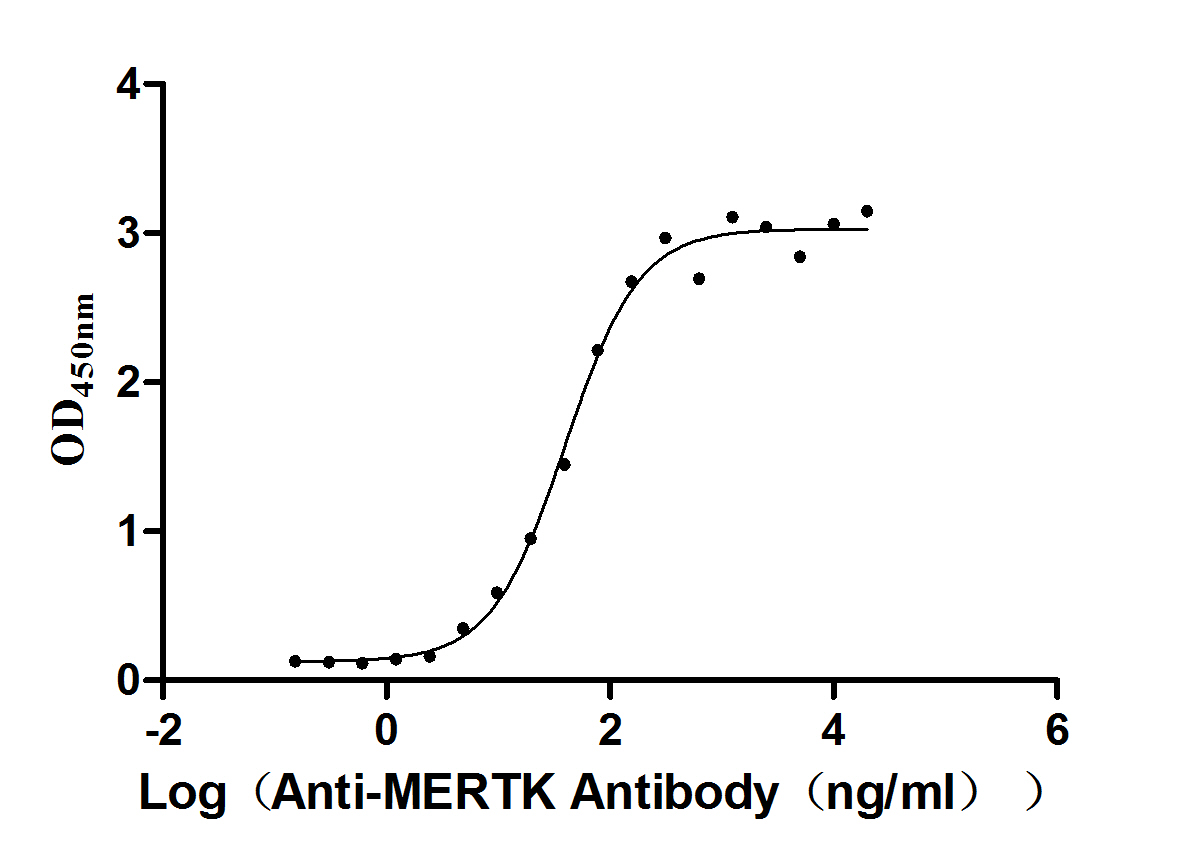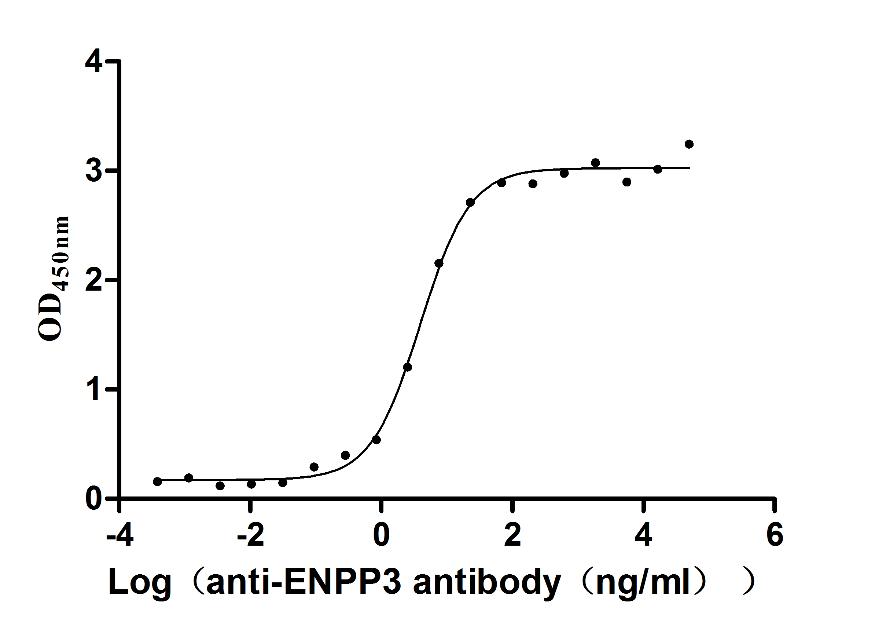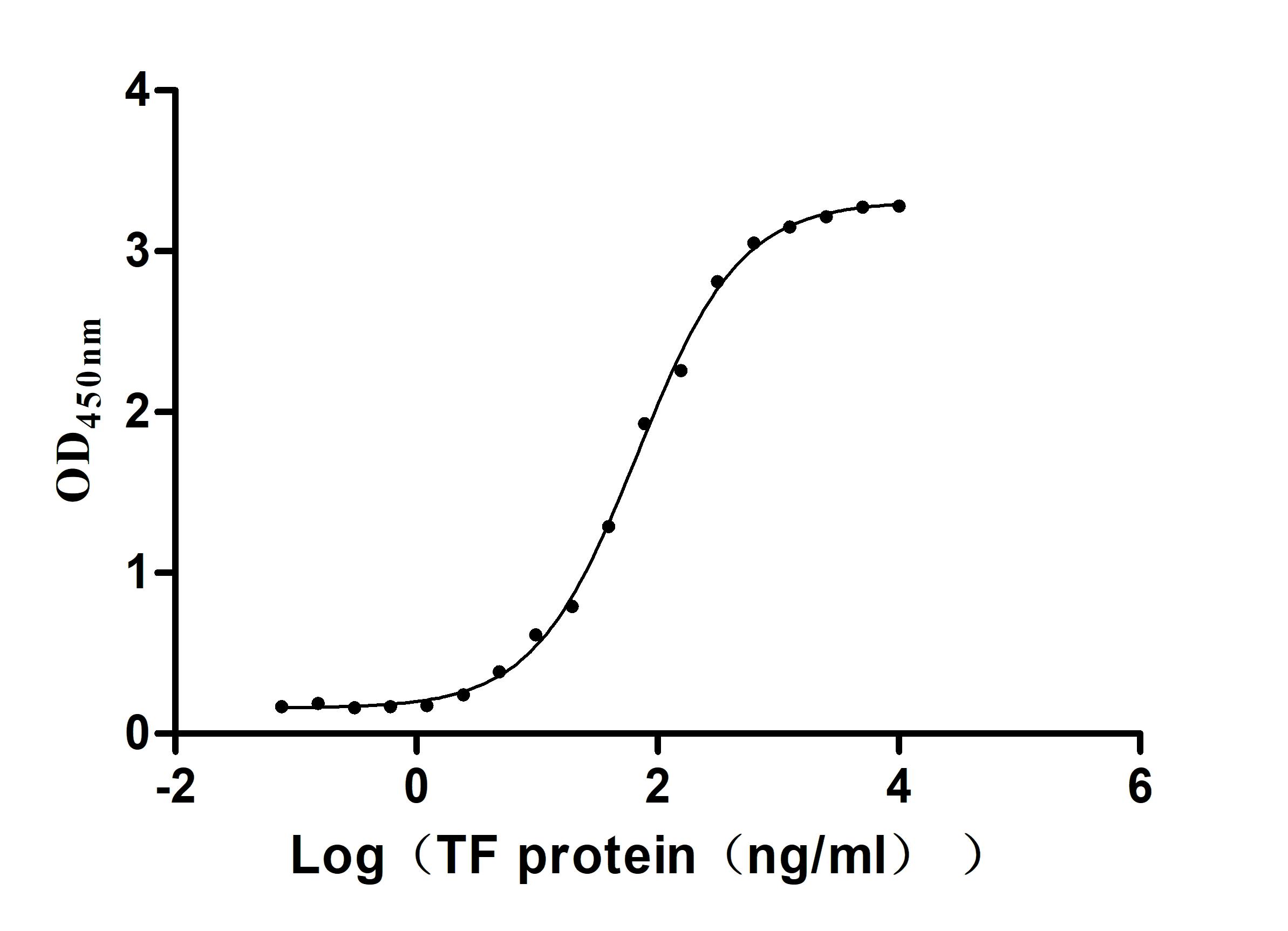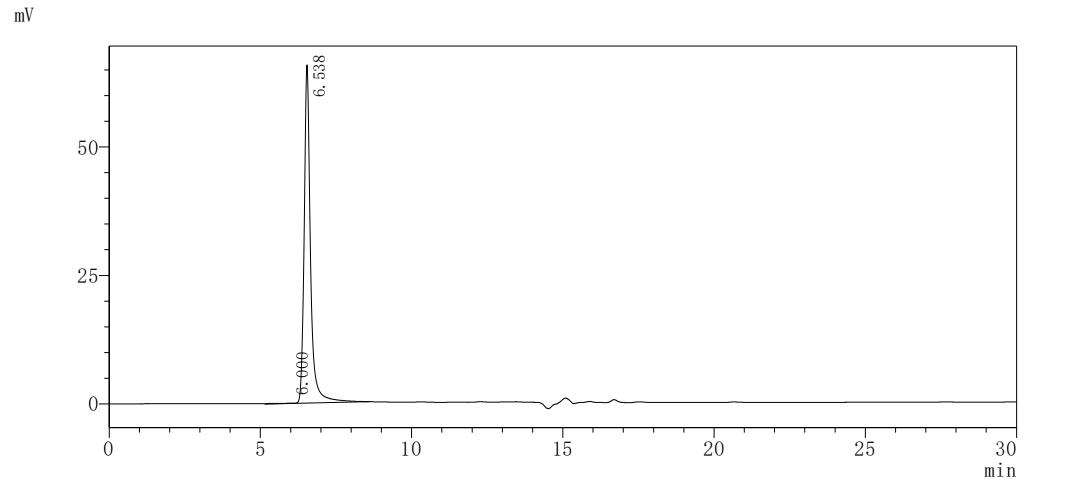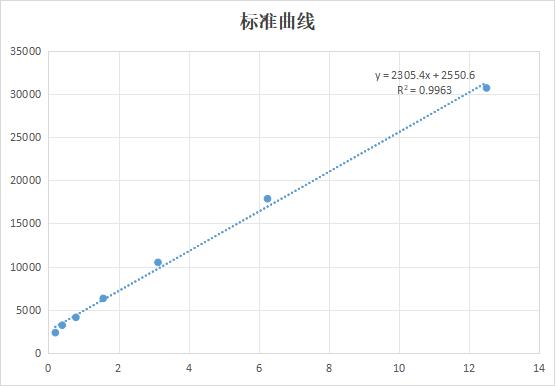Recombinant Mouse Retinal-specific ATP-binding cassette transporter (Abca4), partial
-
中文名稱:Recombinant Mouse Retinal-specific ATP-binding cassette transporter(Abca4) ,partial
-
貨號:CSB-YP001040MO
-
規(guī)格:
-
來源:Yeast
-
其他:
-
中文名稱:Recombinant Mouse Retinal-specific ATP-binding cassette transporter(Abca4) ,partial
-
貨號:CSB-EP001040MO
-
規(guī)格:
-
來源:E.coli
-
其他:
-
中文名稱:Recombinant Mouse Retinal-specific ATP-binding cassette transporter(Abca4) ,partial
-
貨號:CSB-EP001040MO-B
-
規(guī)格:
-
來源:E.coli
-
共軛:Avi-tag Biotinylated
E. coli biotin ligase (BirA) is highly specific in covalently attaching biotin to the 15 amino acid AviTag peptide. This recombinant protein was biotinylated in vivo by AviTag-BirA technology, which method is BriA catalyzes amide linkage between the biotin and the specific lysine of the AviTag.
-
其他:
-
中文名稱:Recombinant Mouse Retinal-specific ATP-binding cassette transporter(Abca4) ,partial
-
貨號:CSB-BP001040MO
-
規(guī)格:
-
來源:Baculovirus
-
其他:
-
中文名稱:Recombinant Mouse Retinal-specific ATP-binding cassette transporter(Abca4) ,partial
-
貨號:CSB-MP001040MO
-
規(guī)格:
-
來源:Mammalian cell
-
其他:
產品詳情
-
純度:>85% (SDS-PAGE)
-
基因名:
-
Uniprot No.:
-
別名:Abca4; AbcrRetinal-specific phospholipid-transporting ATPase ABCA4; EC 7.6.2.1; ATP-binding cassette sub-family A member 4; RIM ABC transporter; RIM protein; RmP; Retinal-specific ATP-binding cassette transporter
-
種屬:Mus musculus (Mouse)
-
蛋白長度:Partial
-
蛋白標簽:Tag?type?will?be?determined?during?the?manufacturing?process.
The tag type will be determined during production process. If you have specified tag type, please tell us and we will develop the specified tag preferentially. -
產品提供形式:Lyophilized powder
Note: We will preferentially ship the format that we have in stock, however, if you have any special requirement for the format, please remark your requirement when placing the order, we will prepare according to your demand. -
復溶:We recommend that this vial be briefly centrifuged prior to opening to bring the contents to the bottom. Please reconstitute protein in deionized sterile water to a concentration of 0.1-1.0 mg/mL.We recommend to add 5-50% of glycerol (final concentration) and aliquot for long-term storage at -20℃/-80℃. Our default final concentration of glycerol is 50%. Customers could use it as reference.
-
儲存條件:Store at -20°C/-80°C upon receipt, aliquoting is necessary for mutiple use. Avoid repeated freeze-thaw cycles.
-
保質期:The shelf life is related to many factors, storage state, buffer ingredients, storage temperature and the stability of the protein itself.
Generally, the shelf life of liquid form is 6 months at -20°C/-80°C. The shelf life of lyophilized form is 12 months at -20°C/-80°C. -
貨期:Delivery time may differ from different purchasing way or location, please kindly consult your local distributors for specific delivery time.Note: All of our proteins are default shipped with normal blue ice packs, if you request to ship with dry ice, please communicate with us in advance and extra fees will be charged.
-
注意事項:Repeated freezing and thawing is not recommended. Store working aliquots at 4°C for up to one week.
-
Datasheet :Please contact us to get it.
靶點詳情
-
功能:Flippase that catalyzes in an ATP-dependent manner the transport of retinal-phosphatidylethanolamine conjugates like the 11-cis and all-trans isomers of N-retinylidene-phosphatidylethanolamine from the lumen to the cytoplasmic leaflet of photoreceptor outer segment disk membranes, where N-cis-retinylidene-phosphatidylethanolamine (N-cis-R-PE) is then isomerized to its all-trans isomer (N-trans-R-PE) and reduced by RDH8 to produce all-trans-retinol (all-trans-rol) and therefore prevents the accumulation of excess of 11-cis-retinal and its schiff-base conjugate and the formation of toxic bisretinoid. Displays both ATPase and GTPase activity that is strongly influenced by the lipid environment and the presence of retinoid compounds. Binds the unprotonated form of N-retinylidene-phosphatidylethanolamine with high affinity in the absence of ATP and ATP binding and hydrolysis induce a protein conformational change that causes the dissociation of N-retinylidene-phosphatidylethanolamine.
-
基因功能參考文獻:
- a comprehensive analysis using RNA-seq identified important roles of the acute stress response in the degenerating retina of Abca4-/-Rdh8-/- mice that are predisposed to retinal degeneration under light stress. PMID: 27315541
- Data indicate that knocking out the ATP-binding cassette transporter Abca4 gene correlated with an increase in all orange pigments. PMID: 26106163
- The viral oncoprotein HBx of Hepatitis B virus promotes the growth of hepatocellular carcinoma through cooperating with the cellular oncoprotein RMP. PMID: 25516716
- Despite pronounced lipofuscin accumulation in the retinal pigment epithelium of Abca4(-/-) mice, ERG and histology showed a slow age-related thinning of the photoreceptor layer similar to wild type controls up to 12 months. PMID: 23761084
- Abca4-deficient mice accumulate more of the toxic bisretinoid A2E than their ABCA4-competent counterparts which contribute to primary cone toxicity and may be associated with macular vision loss PMID: 22033104
- Mutations known to cause Stargardt disease decrease N-retinylidene-phosphatidylethanolamine and phosphatidylethanolamine transport activity of ABCA4 PMID: 22735453
- The physiological role of Abca4 may include the translocation of 11-cis-retinal complexes across the disk membrane PMID: 22570475
- Upregulation of Abca4 in the liver is a tissue-specific compensatory consequence of the 'knock-out' of Abcc6 in mice. PMID: 21435020
- Abcr (-/-) mice exhibit progressive photoreceptor cell loss that is detectable at 8 months of age and that has worsened by 11 and 13 months of age. PMID: 20238056
- In 2-month-old Abca4-/- mice, A2E was found in the center of the retinal pigment epithelial tissue; with age, A2E increased across the tissue PMID: 21357388
- A long wavelength fluorescence emission intrinsic to abca4(-/-) retinal explants is shown to emanate from A2PE-H(2). PMID: 16638746
- Studies in mice suggest thet vitamin A supplementation should be avoided in patients with ABCA4 mutations or other retinal or macular dystrophies associated with lipofuscin accumulation in the retinal pigment epithelium. PMID: 18515570
- mice lacking both the ATP-binding cassette transporter 4 (Abca4) and enzyme retinol dehydrogenase 8 (Rdh8), proteins critical for all-trans-retinal clearance from photoreceptors, developed severe RPE/photoreceptor dystrophy at an early age PMID: 18658157
顯示更多
收起更多
-
亞細胞定位:Membrane; Multi-pass membrane protein. Endoplasmic reticulum. Cell projection, cilium, photoreceptor outer segment.
-
蛋白家族:ABC transporter superfamily, ABCA family
-
組織特異性:Retinal-specific. Seems to be exclusively found in the rims of rod photoreceptor cells.
-
數據庫鏈接:
Most popular with customers
-
Recombinant Human CD40 ligand (CD40LG), partial (Active)
Express system: Mammalian cell
Species: Homo sapiens (Human)
-
Recombinant Severe acute respiratory syndrome coronavirus Spike glycoprotein (S), partial (Active)
Express system: Mammalian cell
Species: Human SARS coronavirus (SARS-CoV) (Severe acute respiratory syndrome coronavirus)
-
Recombinant Human Tyrosine-protein kinase Mer (MERTK), partial (Active)
Express system: Mammalian cell
Species: Homo sapiens (Human)
-
Express system: Mammalian cell
Species: Macaca fascicularis (Crab-eating macaque) (Cynomolgus monkey)
-
Recombinant Human Serotransferrin(TF) (Active)
Express system: Mammalian cell
Species: Homo sapiens (Human)
-
Recombinant Human Cadherin-1(CDH1),partial (Active)
Express system: Mammalian cell
Species: Homo sapiens (Human)
-
Recombinant Human C-C chemokine receptor type 9 (CCR9)-VLPs (Active)
Express system: Mammalian cell
Species: Homo sapiens (Human)
-
Recombinant Human Urokinase-type plasminogen activator(PLAU) (Active)
Express system: Mammalian cell
Species: Homo sapiens (Human)


